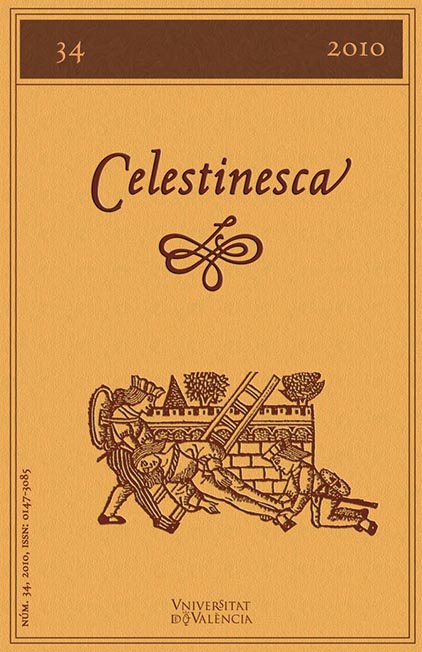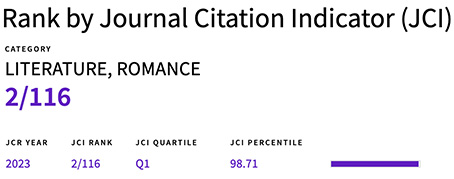Main Aspects of the Reception and Conveyance of Irony in the Earliest English Versions of Celestina
DOI:
https://doi.org/10.7203/Celestinesca.34.20126Keywords:
Celestina, translations in Elizabethan England, irony, genre shifts, factors affecting the perception, transmission and translation of irony Abstract
Abstract
Celestina (Rojas, 1499/ ca.1502) was shortly after translated into English in the Elizabethan period, in very different literary forms, which would be best approached as «re-creations», rather than translations proper (Murillo 1994, 1992): Rastell’s version (1525), written in the form of an interlude, and Captain Stevens' The Bawd of Madrid (1707), as a narrative piece. Only Mabbe’s Celestine (1631) is formally similar to Rojas's work. Irony has always been acknowledged by critics as an essential element of the message conveyed by Rojas. On the whole, the genre shifts that Rastell's and Stevens' works underwent may be expected to influence the way irony is conveyed. On the other hand, although Mabbe's version follows the main structure and themes of the original, some essential features of this version lie at the core of some peculiar interpretations of irony.
 Downloads
Downloads
Downloads
Published
How to Cite
-
Abstract408
-
PDF (Español)180
Issue
Section
License
![]() Celestinesca is committed to the dissemination of knowledge, that is why access to its contents is free and is ruled by a Creative Commons Attribution-NonCommercial-NoDerivatives 4.0 license.
Celestinesca is committed to the dissemination of knowledge, that is why access to its contents is free and is ruled by a Creative Commons Attribution-NonCommercial-NoDerivatives 4.0 license.
Authors retain the rights to their works. Therefore, they can disseminate them and deposit them in the repository, institutional or not, that they wish. However, they are kindly requested to do so by providing the full bibliographic reference and the corresponding DOI.
Celestinesca does not charge authors for submitting, processing, reviewing or publishing their articles.





